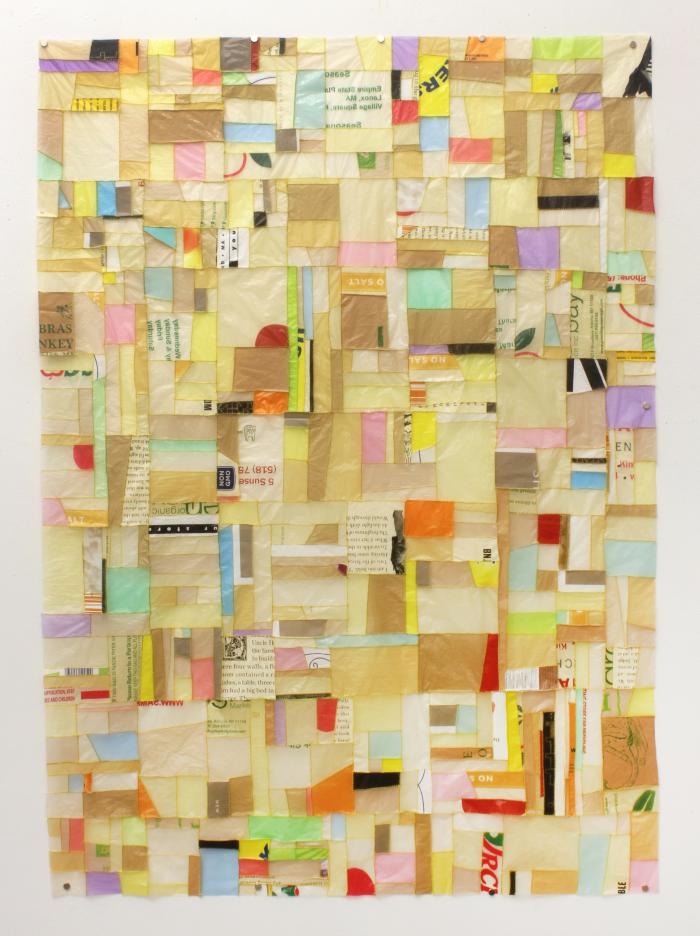Yeon Jin Kim 김 연진
Yeon Jin Kim is an interdisciplinary artist and filmmaker, born in South Korea and based in New York City. Kim's most recent solo exhibitions were held at Pilseung-sa, Seoul, South Korea, the Society for Domestic Museology in New York, and Albright College in Reading, PA.
Her NYSCA-supported public Jogakbo project was installed in Inwood Hill Park in New York City.
Her films have recently been screened at the Philadelphia Asian Film Festival, New Filmmakers New York, and the Glimmerglass Film Festival in Cooperstown, NY. Her recent animation “Zoonomia” received Honorable Mention from the Experimental Video and Film Festival in New York City.
Her work was featured in the book "50 Contemporary Women Artists", edited by Heather Zises and John Gosslee in 2018, and in “Shared Dialogue, Shared Space “ by the Korea Art Forum, 2023.
She has done numerous residencies, including Outpost Artist Resources, the Teton Art Lab, the Winter Workspace Program at Wave Hill, the Kimmel Harding Nelson Center for the Arts, the Fountainhead Residency, I-Park, the Abrons Arts Center, the Islip Museum, Sculpture Space, the Saltonstall Foundation and Yaddo.
Kim is an independent curator currently organizing a group exhibition in Hiroshima that will feature 25 international artists. She will also show recent collages and videos in a 3-person show in Gallery Ondo, Seoul, Korea. She teaches at Binghamton University, SUNY.
Her NYSCA-supported public Jogakbo project was installed in Inwood Hill Park in New York City.
Her films have recently been screened at the Philadelphia Asian Film Festival, New Filmmakers New York, and the Glimmerglass Film Festival in Cooperstown, NY. Her recent animation “Zoonomia” received Honorable Mention from the Experimental Video and Film Festival in New York City.
Her work was featured in the book "50 Contemporary Women Artists", edited by Heather Zises and John Gosslee in 2018, and in “Shared Dialogue, Shared Space “ by the Korea Art Forum, 2023.
She has done numerous residencies, including Outpost Artist Resources, the Teton Art Lab, the Winter Workspace Program at Wave Hill, the Kimmel Harding Nelson Center for the Arts, the Fountainhead Residency, I-Park, the Abrons Arts Center, the Islip Museum, Sculpture Space, the Saltonstall Foundation and Yaddo.
Kim is an independent curator currently organizing a group exhibition in Hiroshima that will feature 25 international artists. She will also show recent collages and videos in a 3-person show in Gallery Ondo, Seoul, Korea. She teaches at Binghamton University, SUNY.
My creative practice spans and often combines drawing, installation, animations, narrative videos, Jogakbo, and altered books.
As a child, I was introduced to Jogakbo by my aunt, who was talented in traditional Korean arts. Her sophisticated Jogakbo, (traditional Korean wrapping cloths) were sometimes gifted to family members. It was one of these beautiful pieces that inspired me to update this unique art form and increase the scale, by stitching together pieces of commercial plastic bags collected in New York City and Seoul. I have also produced large-scale Jogakbo banners, using vinyl, which have been installed in New York City parks.
Another body of work, which was influenced by my expatriate perspective, is a series of altered book works. For example, I have cut intricate lace patterns into the pages of “Home Economics for Girls” and “War Preparation for Girls”, textbooks from my school years in Seoul. These books were designed to prepare girls for traditional wifely roles and to take care of the boys who would be injured in the inevitable war with communist North Korea. The lace patterns I cut into the pages interrupt the indoctrinating narrative that stoked fear of communism as an instrument of control. Another book piece extracted words from the dictator’s self-serving autobiography, reclaiming the lyrics of five hundred songs that he banned.
My book and text works directly address social and political realities while my Jogakbo celebrate and build upon my Korean cultural roots, while connecting me to similarly undervalued needlecraft traditions from other cultures.
In my film practice, I use a deliberately low-tech process combined with various animation techniques. My videos are shot from scroll drawings and miniature, handmade two and three-dimensional models and sets, and the characters are hand-activated. Recent works include a ghost story, a science fiction adventure, and a monster-comedy.
As a child, I was introduced to Jogakbo by my aunt, who was talented in traditional Korean arts. Her sophisticated Jogakbo, (traditional Korean wrapping cloths) were sometimes gifted to family members. It was one of these beautiful pieces that inspired me to update this unique art form and increase the scale, by stitching together pieces of commercial plastic bags collected in New York City and Seoul. I have also produced large-scale Jogakbo banners, using vinyl, which have been installed in New York City parks.
Another body of work, which was influenced by my expatriate perspective, is a series of altered book works. For example, I have cut intricate lace patterns into the pages of “Home Economics for Girls” and “War Preparation for Girls”, textbooks from my school years in Seoul. These books were designed to prepare girls for traditional wifely roles and to take care of the boys who would be injured in the inevitable war with communist North Korea. The lace patterns I cut into the pages interrupt the indoctrinating narrative that stoked fear of communism as an instrument of control. Another book piece extracted words from the dictator’s self-serving autobiography, reclaiming the lyrics of five hundred songs that he banned.
My book and text works directly address social and political realities while my Jogakbo celebrate and build upon my Korean cultural roots, while connecting me to similarly undervalued needlecraft traditions from other cultures.
In my film practice, I use a deliberately low-tech process combined with various animation techniques. My videos are shot from scroll drawings and miniature, handmade two and three-dimensional models and sets, and the characters are hand-activated. Recent works include a ghost story, a science fiction adventure, and a monster-comedy.
Featured Artworks
Loading...
Similar Artists
Loading...
